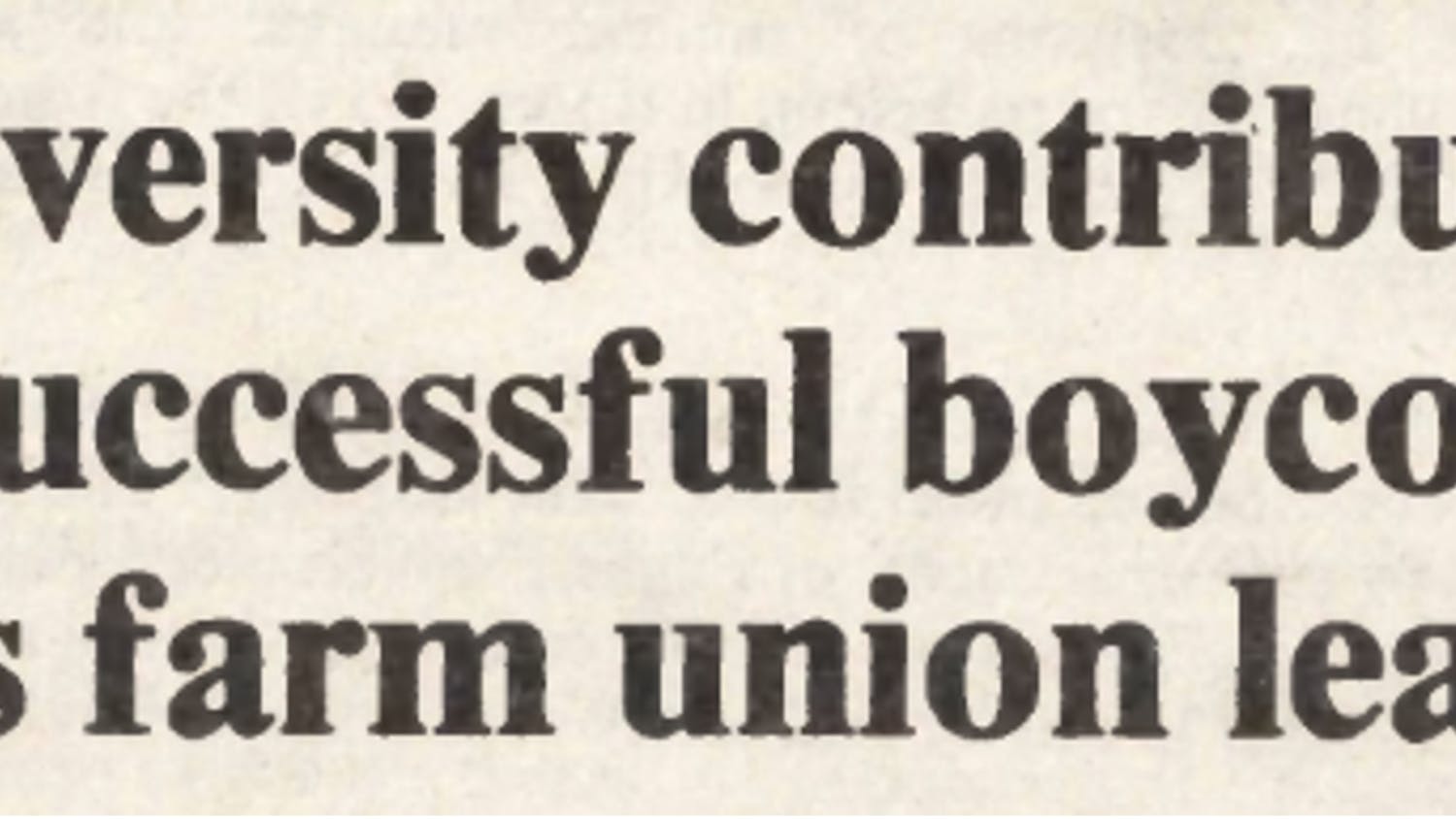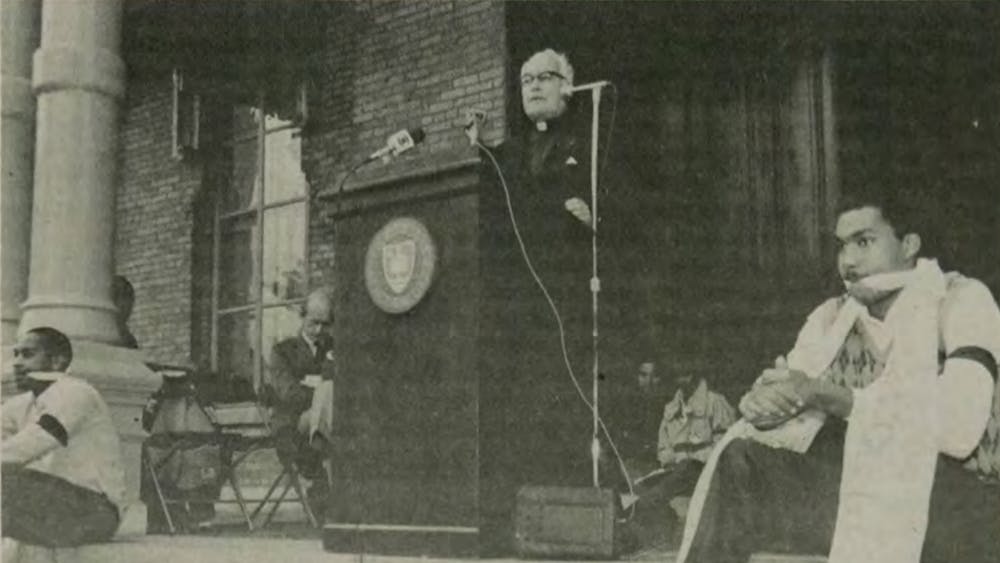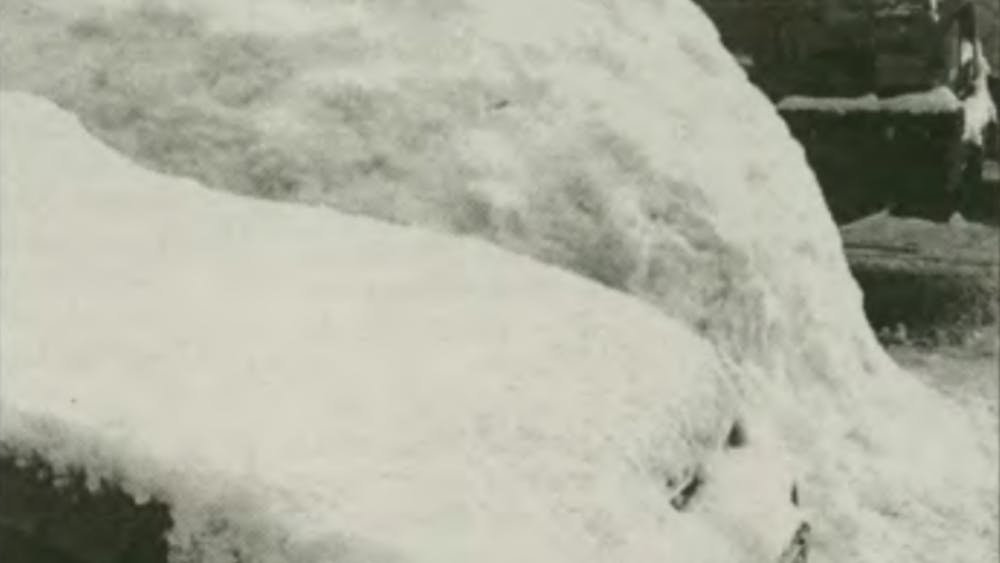
Food poisoning outbreak leads to riot at North Dining Hall
Feb. 1, 1968 | Researched by Spencer Kelly
On Jan. 14, 1968, a number of students reported experienced symptoms of food poisoning after eating at North Dining Hall. Although only 200-300 students reported their condition to the infirmary, the administration estimated that closer to 500 students suffered similar symptoms.After testing some of the food in his laboratory, Dr. Louis Howe, director of the St. Joseph County Public Health Department, concluded that a bad batch of beef containing infectious bacteria triggered the outbreak.Once the magnitude of the outbreak became apparent, five student senators met with vice president of student affairs Rev. Charles McCarragher, C.S.C. to address the situation. Fr. McCarragher issued an apology for the inconvenience and worked with the Office of Academic Affairs to allow affected students to retake or make up exams.But this wasn’t enough for students. Security director Arthur Pears said posters advertising a planned food riot were hung in dorms around North Quad. Expecting trouble, Pears stationed six of his men in the dining hall, two of whom wielded guns.At approximately 5:15 p.m. on Jan. 19, the riot began in earnest. The article described a chaotic scene where students “kicked over tables, stacks of glasses and plates and then began pelting the walls with cream puffs.”In the aftermath, dean of students Rev. James Riehle, C.S.C. placed six students apprehended at the riot on disciplinary probation. At the time of the article’s publication, the administration was considering taxing all students living on North Quad to pay for the $850 of damage done to North Dining Hall.According to the article, this was not an isolated incident at Notre Dame. A major food riot also occurred in 1951 when the dining halls tried to switch from eight-ounce to six-ounce milk glasses. Another riot broke out in 1954 when the dining halls began using a tenderizer to shred the meat. It seems that, in the 1950s and ‘60s, the relationship between campus dining and students was a perilous one.Drunk students and a Michigan victory? Food fight!
Sept. 20, 1979 | Tim Sullivan | Researched by Maggie Clark
After a football victory against the University of Michigan, celebration throughout the Notre Dame campus is essentially guaranteed. In 1979, however, this post-win excitement manifested itself in a peculiar way: a food fight. At the conclusion of the game on Sept. 15, rambunctious students reigned supreme in both North and South Dining Halls as the food was mercilessly sprawled through the air. Tim Sullivan (‘80) covered the controversy of the unexpected events — both the chaotic scene and the equally chaotic aftermath. In particular, he highlighted the reaction from Robert J. Robinson, the senior food service director at the time, who was not happy, to say the least. Robinson claimed the food fight was a somewhat unforeseen side effect of student intoxication; however, he was also clear that it would never happen again under his watch. In a Letter to the Editor, Robinson outlined his disappointment in the first sentence, powerfully claiming, “Once again, to my disgust and chagrin,·I find myself having to address the issue of drunken, disorderly behavior and the throwing of food in the dining halls after a football game.” Robinson went on to further defend the dignity of campus dining spaces, noting “that the dining halls are not public domain. They are not barrooms nor nightclubs.” Rather, Robinson clarified, the dining halls are places deserving of dignity and respect — two values students conveniently forgot in the heat of their post-game, food-fueled celebrations. If we learn anything from the rambunctious outburst of 1979, it’s that a win for the Notre Dame football team does not correlate to a win for the campus dining facilities.Dining hall debate becomes spousal squabble
Jan. 31, 2003 | Matt Bramanti | Researched by Sofia CrimiVaroli
The rivalry between North and South Dining Halls is a battle wherein every freshman must pick their side. Everyone on campus has had the debate at one time or another, and each student believes unequivocally that they have the answer and the reasoning to back it up. The rivalry isn’t just for students, though, as is apparent with the Quigg-Anspaugh case, covered by Matt Bramanti (‘04) on Jan. 31, 2003.Mike and Barbara Quigg and Jim and Edna Anspaugh were two married couples who worked at the dining halls. Barbara Quigg and Edna Anspaugh worked in South Dining Hall, whereas their husbands Mike Quigg and Jim Anspaugh worked in North Dining Hall. Like students, they were not immune to some healthy debate over the better dining hall — debates that eventually resulted in a battle of the T-shirts.To boost morale among NDH employees, T-shirts emblazoned with “I Love North” were designed for them. These shirts sparked friendly competition between the two dining hall teams — even between husbands and wives.Barbara Quigg commissioned her niece, who ran a T-shirt printing business, to create “South is Better” shirts for SDH employees to represent their pride. “It started as a joke among the husbands,” Barbara Quigg quipped. “And it just got out of hand.”









